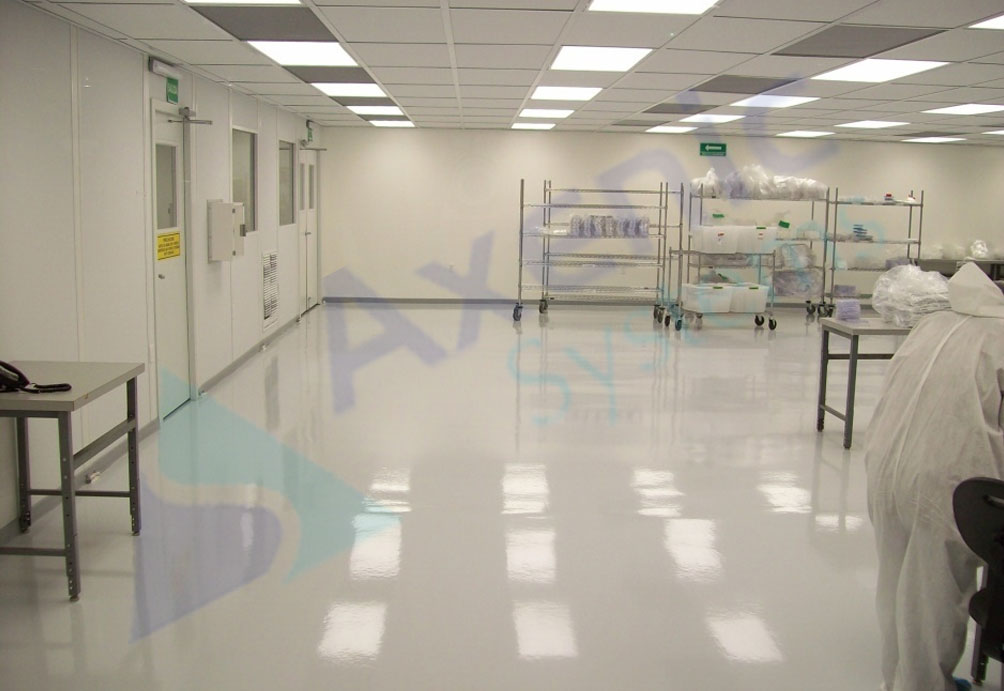Axenic System is one of the leading company engaged in architectural
designing, planning, installation, commissioning of HVAC and Turnkey
construction for cleanroom projects
Unidirectional Flow Cleanroom
Table of Contents

Introduction to Unidirectional Flow Cleanroom
AXENIC SYSTEMS (established in 1995) is one of the leading companies engaged in planning and installing of Unidirectional Flow Cleanroom to carry out several manufacturing processes. Unidirectional Flow Cleanroom ensures that only clean air passes down over the procedure, protecting delicate products and processes from airborne particulates. A highly experienced team of professionals’ design a unidirectional cleanroom environment that is free from any particles shed from operators, and any elements produced from the process.
Unidirectional Laminar airflow refers to air that flows in a straight, unrestricted path. Unidirectional Flow Cleanroom directs filtered air downward or in parallel direction in a continuous stream towards filters located on walls near the cleanroom floor or through elevated perforated floor panels to be recirculated.
Unidirectional Laminar flow occurs when air can flow efficiently, and reveals a parabolic velocity profile. It is maintained in cleanrooms through the use of laminar airflow hoods that direct air jets downward in a straight route, as well as cleanroom construction that ensures turbulence is lessened.
Unidirectional Flow Cleanroom utilises HEPA filters to filter and decontaminate all air entering the environment. Laminar filters are often composed of stainless steel or other non-shed materials to ensure the amount of elements that enter the facility remains low.
Working of Unidirectional Flow Cleanroom
The basic working of a unidirectional flow room involves high efficiency filters that are mounted across a complete ceiling (or wall in some systems) and these supply air. This air sweeps across the room in a unidirectional manner at a speed of around 0.4 m/s (80 ft./min) and exits through the floor, as a result removing the airborne contamination from the room. This system uses more air than the turbulently ventilated cleanroom but because of the focused air movement, it reduces the spread of contamination around the room and sweeps it out through the floor.
In unidirectional “laminar” flow, the air flow does not have a vortex motion inside the Clean Room (as with the turbulent one), but it pushes the air consistently from top to bottom. This process is called the “piston effect”.
Types of Unidirectional Flow Cleanroom
- Vertical Unidirectional Flow Clean Rooms:
The main feature of this type of Clean Rooms is that the filtering units are installed on the suspended ceiling grid, covering between at least 80 to 100% of the surface. Such value is suggested by standard UNI EN ISO 14644. In maximum cases, air is supplied via a floating floor made up of perfectly-laid perforated tiles to assure the laminarity of the air flow.
- Horizontal Unidirectional Flow Clean Rooms:
This latest type of flow is normally used in operating rooms to protect patient beds or in the aerospace industry to defend the critical phases of satellite assembly. In this case, filtering units are placed vertically on a Clean Room wall, while air supply grids are placed on the opposite wall to ensure a horizontal flow of air.
Search For Tags:- non-unidirectional airflow cleanroom, laminar flow, turbulent air flow in clean room, clean room laminar flow, which air flow pattern does not seen in clean room, unidirectional air flow in birds, air flow pattern in clean room, types of air flow pattern
